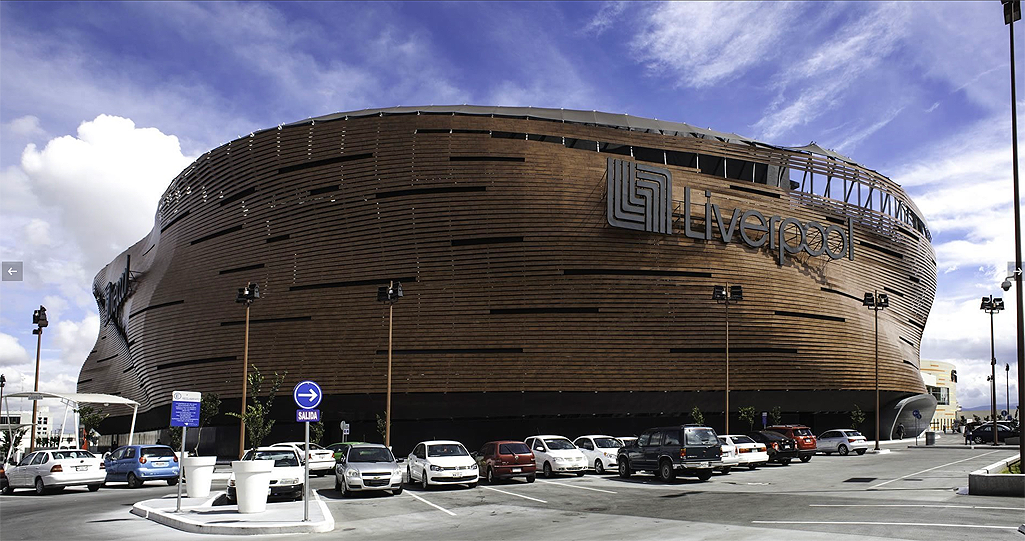
The perfect panel
Both phenolic and melamine resins are used in thermosetting plastic materials to create panel materials used for indoor and outdoor applications. Yet each has its distinct characteristics and role to play for contractor’s purposes.
This article explains phenolic and melamine resins, their place in high pressure laminate panels, and best uses cases for each.
What is phenolic resin?
Phenolic resins, or phenoplasts, are a synthetic thermosetting resin first invented in 1907 by Dr. Leo Baekeland. You may have heard of these materials as Bakelite. The phenoplasts are either self-curing in the presence of reactive side groups or need a cross-linking agent. Phenolic resins are versatile, lightweight, and fine machinable.
Phenolic resin materials have low toxicity with no organic halogen (or chlorine, fluorine, bromine, etc.) compounds. Plus, there’s no sulfur, mercury or cadmium, and are free of asbestos and wood protection agents (fungicides, pesticides, etc.)
Compared to melamine, phenolic resin provides greater tensile strength, withstands higher temperatures, and offers enhanced strength to weight (axial and bending) as well as thermal shock resistance.
Phenolic resins are used in various industries including food and beverage, marine and aerospace, industrial, construction, healthcare, etc., and used as coatings or in molded parts.
What is melamine resin?
Melamine, also called melamine formaldehyde (MF), resin is made from melamine and formaldehyde. An organic-based crystalline powder, melamine has been used since the 1950s with other chemicals to create a plastic resin. Melamine resin can be molded into light color products with better moisture and heat resistance than urea-formaldehyde (UF) panels.
Overall, melamines are heat sensitive, difficult to process, and alkaline resistant. Melamine is easily maintained, available in a range of thicknesses, and readily available for use in abrasion and scratch resistant colors and finishes. The resins are used to manufacture many products including laminates, overlay materials, particleboards, and floor tiles.
What is a high-pressure laminate?
Now that you understand phenolic and melamine resin, it’s important to see how the different resins factor into materials available to the construction industry.
Melamine resin is typically used in low-pressure laminates (LPL). A laminating machine bonds one or two layers of kraft paper onto a particleboard sealed with the melamine resin. The resulting materials are often used in commercial shelving, entertainment units, store fixtures, or office furniture. LPL is popular in vertical applications where minimal wear and tear is expected.
Phenolic resin adds durability to create a high-pressure laminate (HPL). A thin HPL is made up of four to six/eight layers of phenolic-resin-infused kraft paper that is bonded together using high pressure and temperatures. Thicker high-pressure compact laminates are comprised of many layers of phenolic-resin infused kraft paper. The number of layers is determined by the finished thickness of the panels.
Whereas the LPL might be fused using 20 to 30 bars of pressure and temperatures of 335 to 375 degrees Fahrenheit, the HPL adheres the laminate to a substrate layer with 70 to 100 bars (that’s between 1,000 and 1,500 psi) pressure.
The product can be used both horizontally and vertically and is effective in many settings where there is more traffic and greater need for impact, heat, and moisture resistance. Phenolic HPL panels can even be used on curved surfaces, depending on the radius. Phenolic resin makes a non-porous material well suited for applications such as:
- Humid environment rainscreen facades or wall cladding
- Moist rich interior settings such as washrooms
- Lab spaces using solvents or chemicals
- Food and pharmaceutical settings needing anti-microbial properties
- Graffiti-resistant balconies, rainscreen cladding or outdoor furniture
HPL panels are also easy to fabricate and install, while offering abrasion, scratch, and impact resistance. Some manufactures offer Class A fire-rated panels as well.
Things to consider when choosing between HPL and LPL Panels
Phenolic and melamine materials each have their particular niches. The contractor will want to consider several key factors to make the best decision for the given project. Beyond price, these include:
Where will the material live?
Drilling down into where exactly the panel will be in the interior or exterior space can make a difference. You may need a product that has a more durable architectural finish for building balconies, outdoor furniture and exterior cladding, but could get away with melamine for a less expensive interior application such as casework, toilet partitions or wall cladding.
What durability needs are there?
The contractor will want to weigh factors such as:
- Amount of traffic
- Aesthetic requirements
- Air moisture maybe change to relative humidity
- Cleaning frequency, stringency
- Risk of graffiti, impact, scratches
- UV color-fastness
What styles are available?
HPL panels can be used in various applications, from soffits and exterior/interior wall cladding to toilet partitions, shelving and lab furniture. Both HPL (phenolic) and LPL panels can be used to make materials of the same thickness, but the range of colors and patterns available could be a contributing factor in your decision. HPL (phenolic panels) are very versatile, whether for public buildings or private commercial facilities.
LPL (low pressure laminates) is often a more affordable option, but when high quality and durability is needed, the price for phenolic HPL makes sense. HPL provides greater protection against the damage of daily use, which can bring long-term cost savings too.
Chad Bryant is the Managing Director at FunderMax North America, Inc. Since 1890, FunderMax has been a leading provider of sustainable HPL phenolic panels for exterior, interior, and laboratory surfaces that are customizable, durable, and easy to install. You can view many applications of phenolic HPL panels from FunderMax in its project gallery.
www.fundermax.us
www.fundermax.us/project-gallery